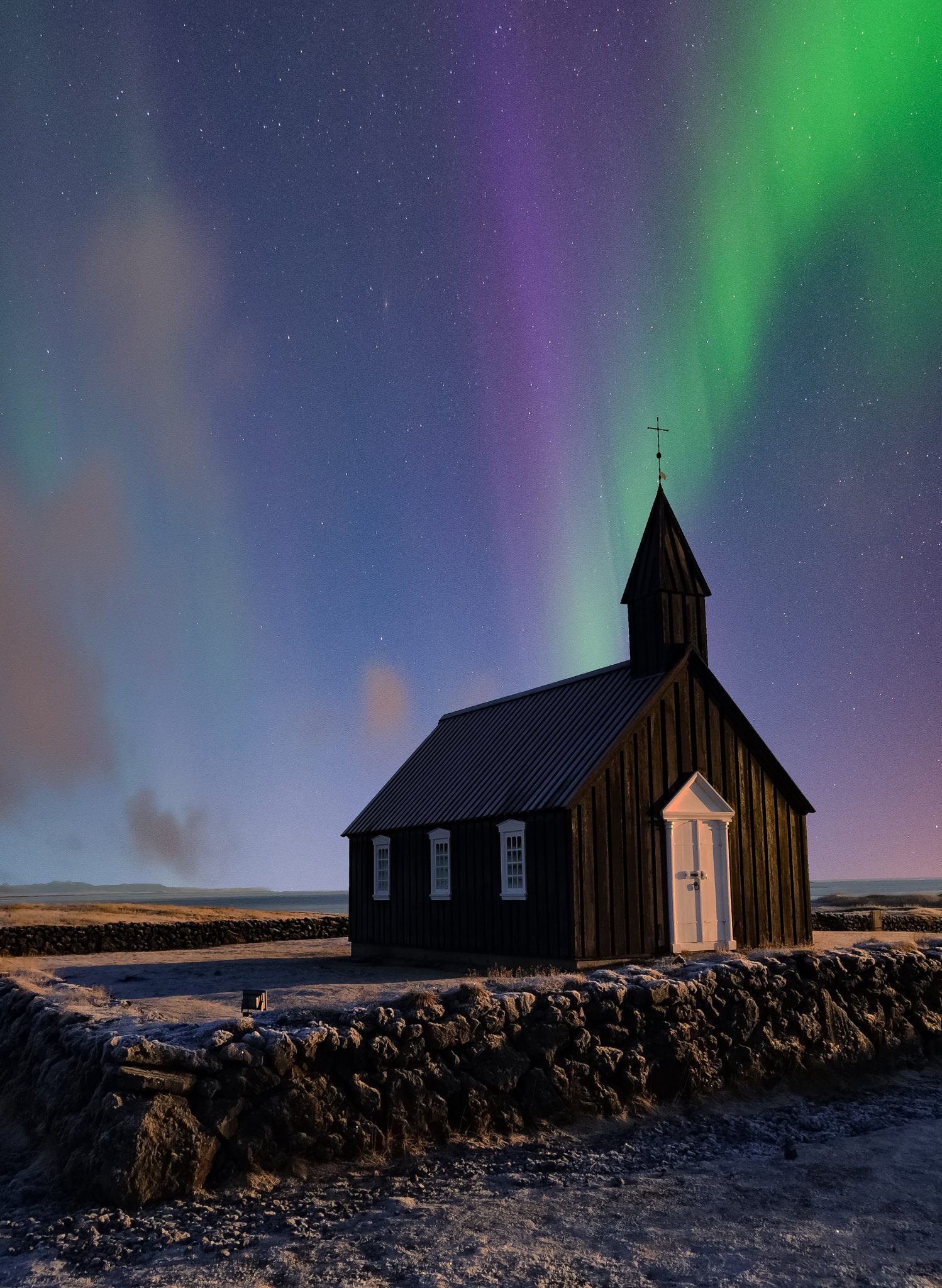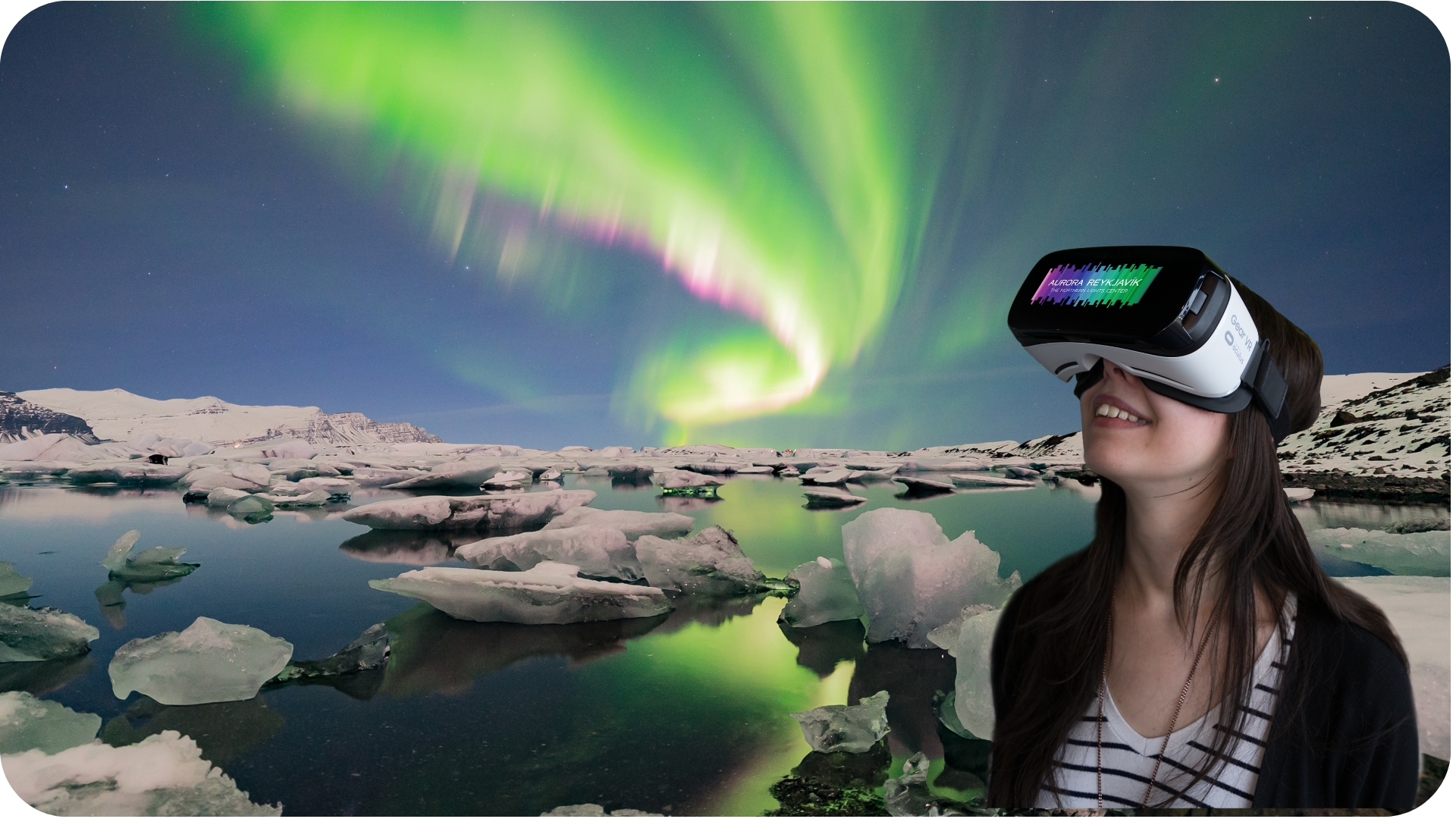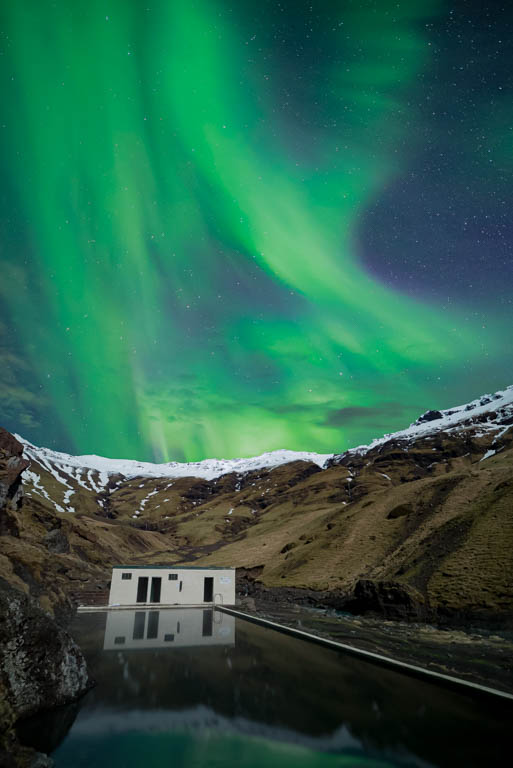Can You See the Northern Lights with the Naked Eye?
The Northern Lights, or Aurora Borealis, are one of nature’s most extraordinary phenomena, captivating travellers and dreamers alike.
The ethereal, dancing lights of green, purple, and red shimmer across the Arctic skies in places like Iceland, leaving spectators in awe.
But here’s a question that often arises: Can you actually see the Northern Lights with the naked eye, or do you need special equipment to fully experience the phenomenon? Let’s dive into this fascinating question and discover just how spectacular the Northern Lights can be for your eyes alone.

Northern Lights, Eye sight, RAW and Processed
What Are the Northern Lights?
Before we discuss whether or not you can see the aurora with your naked eye, it’s important to understand what exactly the Northern Lights are.
These glowing lights are produced when solar particles collide with Earth’s magnetosphere and interact with gases in the atmosphere. This collision creates a vibrant light display as the gases ionize and emit visible light.
While the aurora is visible mainly in polar regions like Iceland, Norway, and Alaska, the phenomenon itself is not tied to any one location. Rather, it’s a result of solar activity and Earth’s magnetic field.
Iceland is situated in a prime location under the auroral oval, the region around the geomagnetic poles where the aurora is most frequently visible. This makes Iceland one of the best places in the world to witness this natural wonder.

Northern Lights at Búðir
Can You See the Northern Lights with the Naked Eye?
In short, yes…you can absolutely see the Northern Lights with your naked eye!
In fact, many people are surprised by just how vivid and striking the aurora can appear, especially when the conditions are ideal.
However, whether or not you can experience the full beauty of the aurora depends on several factors, such as the intensity of the aurora, the level of light pollution, and your viewing location.
The human eye, however, is limited in its ability to fully capture the colours and details that a camera might pick up.
Most people will see primarily green hues, which are the most common colour emitted by the aurora. At times, you might even see a hint of red, purple, or white.
While the human eye can certainly see the Northern Lights, the full spectrum of colours and the intricate details, like the subtle movement of the aurora, are often much more vivid in photos taken with longer exposures – trust us, we know when the influencers are being genuine and when they’re not!
Can You See the Northern Lights in Iceland?
Absolutely! Iceland is one of the best places in the world to witness the Northern Lights. Thanks to its high-latitude location, dark skies, and minimal light pollution, Iceland offers the perfect environment for catching a glimpse of the aurora.
Whether you’re in Reykjavik or exploring the Icelandic countryside, the chances of seeing the Northern Lights are good, especially during the long winter months.
Some of the most popular spots in Iceland for aurora viewing include Thingvellir National Park, Kirkjufell mountain, Vik’s black sand beaches, and Jökulsárlón Glacier Lagoon, each offering a different landscape that can make your experience even more magical.

Northern Lights at Skógafoss
What the Camera Captures vs the Human Eye
When it comes to capturing the Northern Lights, there’s a significant difference between what your naked eye can see and what your camera can capture. This is because cameras are designed to capture light through long exposures, while the human eye relies on immediate sensory input.
With the naked eye, you may see only a soft, pale green glow. In contrast, when you take a photograph of the aurora with a camera that has long exposure capabilities, the camera captures more light and intensifies the colours – transforming that gentle green shimmer into a vivid, swirling display of greens, purples, and sometimes even reds.
Cameras can also pick up the movement of the aurora in ways that the human eye cannot perceive.
This is why many people are often amazed at the photos of the Northern Lights they see online.
While the human eye is good at seeing a broad range of colours and capturing details in the world around us, it simply cannot detect the subtle nuances of light that a camera can.
This difference can make the Northern Lights look far more spectacular in photographs than they do in real life.

Northern Lights above Aurora Reykjavík
Where to See the Northern Lights in Iceland?
Iceland is a top destination for Northern Lights enthusiasts.
With its breathtaking landscapes and unique geography, it offers numerous excellent viewing spots. Here are some of the best places across the country where you’re most likely to catch the aurora in its full glory.
1. Thingvellir National Park
Located just 45 minutes outside Reykjavik, Thingvellir National Park offers more than just historical significance – it’s a great place to see the Northern Lights.
As a UNESCO World Heritage site, Thingvellir sits within a rift valley between the North American and Eurasian tectonic plates. The open spaces and relatively minimal light pollution make it an ideal spot for aurora viewing.
The area is also free from any city lights, ensuring that you have a clear, unobstructed view of the aurora.
When the sky is clear and solar activity is high, Thingvellir becomes a natural theater for the Northern Lights.

Photo from our popular Northern Lights Superjeep tour at Þingvellir

2. Kirkjufell Mountain
Kirkjufell, often dubbed “the most photographed mountain in Iceland,” offers one of the most picturesque locations for aurora viewing.
Located on the Snæfellsnes Peninsula, this mountain’s distinctive, pyramid-like shape combined with the dancing lights creates a perfect backdrop for photographers.
With its remote location, Kirkjufell is far from the light pollution of major cities, offering an unobstructed view of the aurora, often in harmony with the surrounding landscape of waterfalls and coastal scenery.
3. Vík and Reynisdrangar
Vik, located on Iceland’s southern coast, is famous for its black sand beaches and Reynisdrangar sea stacks. Ok, we’ll be honest, you can find many black sand beaches in Iceland, but this one is much more magnificent. This is another great place to watch the Northern Lights in Iceland, ensuring you stay a very safe distance away from the sea’s powerful waves.
The large expanses of open beach and limited artificial light offer the perfect viewing conditions for aurora enthusiasts.
The unique contrast between the black sands and the vibrant aurora makes this a must-visit spot. If you’re lucky enough to catch the lights here, you’ll be treated to a mesmerizing show that’s hard to forget.


4. Jökulsárlón Glacier Lagoon
For something truly magical, head to Jökulsárlón Glacier Lagoon in the southeast of Iceland.
The lagoon is filled with massive floating icebergs, and the sight of the Northern Lights dancing above the water’s surface is nothing short of breathtaking.
The combination of the frozen landscape and the aurora provides a dramatic, ethereal atmosphere that’s simply impossible to match.
Jökulsárlón’s remoteness and lack of surrounding light pollution make it an excellent place to witness the Northern Lights at their most spectacular.
For a full list of the best spots to see and photograph the Northern Lights in Iceland, check out this blog.
When Is the Best Time to See the Northern Lights in Iceland?
To truly maximize your chances of seeing the Northern Lights, timing is everything.
The aurora season in Iceland spans from late August to mid-April, but the best time to visit depends on a variety of factors.
Can You See the Northern Lights in Iceland in May, June, or July?
Unfortunately, no. Iceland experiences the midnight sun during the summer months, meaning the sun doesn’t set for weeks. This bright daylight makes it impossible to see the Northern Lights.
If you’re planning a trip to Iceland during these months, the best you can do is enjoy the unique summer experience of endless daylight.
Can You See the Northern Lights in Iceland in April and August?
Yes, but these months are transitional. April still offers some dark nights at the beginning of the month, making it possible to catch a glimpse of the aurora.
However, as the month progresses, the nights get shorter and aurora sightings become less frequent.
In August, the aurora season is just beginning to pick up again. While the nights are still relatively short, late August offers a chance to see the lights, though they might not be as vibrant as in the winter months.
Can You See the Northern Lights in Iceland in September, October, November, December, January, February, and March?
Yes! These months offer the best conditions for Northern Lights viewing.
The days are shorter, the skies are darker, and solar activity is often at its peak.
The cold winter months of December, January, and February bring clear, crisp nights, perfect for seeing the lights in all their glory.
The end of the season in March also provides good opportunities to catch the aurora, as the days begin to lengthen but the nights are still long enough for aurora sightings.

Photo from Reykjavik Northern Lights Cruise

Experience the Northern Lights in stunning 360° VR—just like in reality, without the cold.
Aurora Reykjavík: A Must-Visit Museum
Not everyone will be lucky enough to witness the Northern Lights during their visit. In contrast, many travellers are completely unprepared for what to expect – that’s where Aurora Reykjavík, the world’s leading Northern Lights Museum, steps in.
The museum offers an immersive experience that brings the magic of the aurora indoors and fills every visitor with facts, stats, stories, and more to take with them on their adventures to finally see nature’s greatest show.
The museum features an impressive Northern Lights theatre, allowing visitors to relax under footage of the Northern Lights from every spot around this unique country.
You can also practice your Northern Lights photography skills and get expert advice on how to capture the Northern Lights through your camera lens with a unique setup to replicate the natural luminosity of the Aurora (…not the Instagram style, sorry!)
Why Visit Aurora Reykjavík?
Northern Lights Theatre: If the weather doesn’t cooperate or you’re not fortunate enough to see the aurora, you can experience it indoors with the museum’s Northern Lights Theatre. Switch off from the hustle and bustle of the city and gaze up at the colours of the Aurora captured from all around Iceland.
Camera Practice: For those interested in capturing the Northern Lights on camera, the museum offers the rare opportunity to help you find the best camera settings for photographing the aurora. Whether you’re a seasoned photographer or just starting out, you’ll leave with practical tips on how to capture this elusive phenomenon (also, ask the staff members, they’re all massive Northern Lights nerds and have plenty to show you!)
Interactive Exhibits: Aurora Reykjavík offers numerous interactive displays that explain the science behind the Northern Lights, the role of the Earth’s magnetosphere, and how solar activity impacts the aurora. You’ll also learn about the history of aurora sightings and their cultural significance across the globe.
Expert Guidance: The museum staff are experts in the field of aurora research, and they can provide valuable insights on how to spot the Northern Lights, as well as the latest forecasts for aurora activity. Their expert advice will help you maximize your chances of catching a glimpse of the lights during your visit.
By visiting Aurora Reykjavík, you can not only learn more about the aurora but also experience it in a variety of exciting ways, making it an essential stop for anyone interested in Iceland’s spectacular natural wonders.
Conclusion: Embrace the Magic of the Northern Lights
The Northern Lights are an extraordinary natural phenomenon, and seeing them is truly a bucket-list experience.
While Iceland offers some of the best locations to witness this breathtaking light display, it’s important to remember that conditions must align for you to experience the aurora in all its glory.
From the intensity of solar activity to the level of light pollution and the quality of the skies, the Northern Lights remain an unpredictable but awe-inspiring spectacle.
Whether you’re in Reykjavik, standing before the picturesque Kirkjufell mountain, or marveling at the aurora’s reflection in the icy waters of Jökulsárlón, Iceland provides some of the best opportunities to witness the Northern Lights.
The diversity of landscapes combined with the sheer beauty of the aurora makes each viewing experience unforgettable.

Northern Lights at Seljavallalaug
When it comes to seeing the Northern Lights with the naked eye, you absolutely can. The glowing, shimmering hues of green and occasionally purple are visible without any special equipment.
However, it’s important to understand that your naked eye won’t see the full range of colours and movement that a camera can capture. While a camera with a long exposure can enhance the colours and the dynamism of the aurora, the human eye will only perceive the most prominent hues, typically in green.
If you’re not fortunate enough to witness the lights firsthand, don’t worry, Aurora Reykjavík offers an immersive museum experience that allows you to explore the beauty and science of the aurora, regardless of the weather outside.
In the end, witnessing the Northern Lights is not just about the lights themselves but about the entire experience – standing in awe beneath the Arctic sky, surrounded by Iceland’s unique landscapes, and knowing that you’re in one of the best places in the world to see nature’s most magical light show.
Whether you manage to catch the aurora with your naked eye or through a camera lens, one thing is for sure: your Northern Lights adventure in Iceland will leave you with memories that last a lifetime.

Northern Lights at Akureyri
Final Tips for Seeing the Northern Lights in Iceland
Stay Patient: The Northern Lights are elusive, and while the chances of seeing them are good in Iceland during the winter months, you may need to be patient. Sometimes it takes hours of waiting in the cold, so dress warmly and bring something to keep you occupied while you wait.
Check the Aurora Forecast: Make sure to check the aurora forecast before heading out. Websites and apps dedicated to aurora predictions can give you real-time information about the likelihood of a display. Cloud cover and solar activity both play a huge role in visibility.
Get Away from City Lights: If you’re in Reykjavik or any other city, make sure to get as far from artificial lights as possible. The further you are from light pollution, the clearer and more vivid the aurora will appear.
Keep Your Camera Ready: While the naked eye can enjoy the beauty of the aurora, a camera with manual settings and a tripod can help capture the stunning spectacle. Experiment with different exposure settings to see what works best for you.
By planning ahead, choosing the right locations, and understanding the science behind the aurora, you’ll maximize your chances of seeing this incredible natural light show.
The Northern Lights are not just a spectacle, they’re a reminder of the vast and beautiful universe we live in. Whether you view them with your eyes or through the lens of a camera, they’ll leave an indelible impression on your soul and get you reaching for your phone to book another flight to our shores.

Lakes and ponds create beautiful reflections
Hunting for the Northern Lights is always an adventure, and witnessing a display of this magical phenomenon will last in your memory for a lifetime.
Tell us about your experiences in the comments!
By Grétar Jónsson, Aurora Expert and Founder of Aurora Reykjavík
